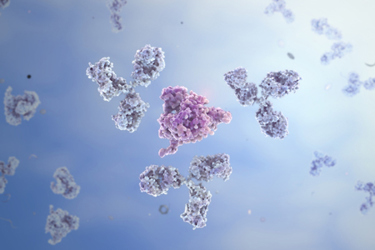AP Biosciences' Approach To Complex Antibody Manufacturing
A conversation with Jhong-Jhe You, Ph.D., AP Biosciences

Among the greatest challenges in producing highly complex multispecific antibodies and fusion proteins are purification and analytics.
AP Biosciences is taking Occam’s razor to those issues with its platform and human antibody library and approaching complicated problems through simplification. As attention and investment interest grows for complex proteins, AP is one of the companies trying to improve on the manufacturing process for its clinical programs in lung cancer, head and neck cancer, esophageal cancer, breast cancer, and solid tumors.
More specifically, APBio’s immunoglobulin G-based, symmetrical bispecific antibody platform, called T-cube, simplifies manufacturing by reducing extra purification steps typically required for more complex antibodies. In a similar fashion, the company is approaching fusion protein purification with simpler purification methods — similar to those used for monoclonal antibodies.
Likewise, the company’s approach to analytics follows suit: start with well-established assays and modify.
We had questions about producing complex proteins in general and some of APBio’s initiatives specifically. Jhong-Jhe You, Ph.D., the company’s vice president of antibody discovery, helped us with some answers. His responses have been edited slightly for clarity.
Can you discuss the specific purification techniques you're using to isolate the molecule of interest from impurities?
Manufacturing bispecific antibodies is always challenging because of their structural complexity. Different formats come with their own unique issues and often require specialized purification processes. Sometimes, additional steps need to be developed just to improve drug quality and remove the impurity, which lowers productivity and drives up costs.
At APBio, we tackle these challenges early in the development process. For our T-cube platform, we designed an IgG-based symmetric bispecific antibody to enhance therapeutic efficiency while simplifying manufacturing. This format eliminates the need for extra purification steps — standard processes like chromatography, cation exchange, and anion exchange purification, commonly used for monoclonal antibodies, are sufficient to effectively remove impurities and produce a drug substance with quality comparable to monoclonal antibodies. These decisions improve both productivity and quality, making manufacturing smoother and helping to keep production costs under control.
Can you talk about the challenges in developing assays to detect and count multispecific antibodies in complex biological matrices? How are you addressing them?
Multispecific antibodies are designed to integrate different epitopes or target-specific recombinant proteins or antibodies into a single molecule. The primary challenge lies in demonstrating two distinct mechanisms of action within a single assay, especially in cell-based systems. Reliable readouts are essential to highlight the benefits of multispecific biologics compared to combination treatments before advancing to animal studies.
At APBio, we prioritize utilizing publicly available assays with minor modifications and appropriate controls whenever possible. This approach enables efficient and timely assay development tailored to our needs. If the two targets are clearly distinct and cannot be assessed within a single assay, separate assays are conducted to independently validate the functionality of each target. However, the synergistic effects of the multispecific antibody can only be fully demonstrated in animal models.
How are you assessing immunogenicity, and what strategies are in place to minimize this risk?
All target-specific antibodies in APBio's portfolio pipeline are developed using our proprietary fully human antibody library, OmniMab, which minimizes immunogenicity right from the start. Unlike mouse hybridoma-derived antibodies that require humanization, OmniMab antibodies are inherently human, eliminating this step and saving precious time as well. Additionally, every antibody sequence undergoes immunogenicity prediction analysis to identify potential regions that could trigger T cell activation. If any such sequences are found, they are optimized through engineering to reduce immunogenicity risks, ensuring safer and more effective therapies.
AP Biosciences is also developing a fusion protein in AP505 for the treatment of solid tumors — notably it's one of the advanced ones along in your pipeline with a Phase 2 trial recently underway. What are the key downstream processing similarities and differences between bispecifics and fusion proteins? Any lessons in AP505 development to inform multispecific development?
AP505 was designed as a symmetric IgG-based fusion protein. This symmetrical structure not only provides bivalency for each target, enhancing binding activity but also minimizes the risk of heavy and light chain mispairing, ensuring the integrity of AP505. With the Fc domain retained — similar to other bispecific antibodies developed at APBio — the manufacturing process leverages standard monoclonal antibody purification methods, making it straightforward for experienced CDMOs to handle.
This conventional approach is key to maintaining high-quality production and optimizing productivity. For instance, the productivity and recovery rates of AP505 are comparable to those of monoclonal antibodies, ensuring smoother manufacturing processes while keeping production costs in check.
AP Biosicences also is developing a platform with its T-cube bispecific antibody platform. What advantages does this platform offer when it comes to antibody purification and stability?
The T-cube platform's bispecific antibody was designed with manufacturing efficiency in mind from the outset. Using an IgG-based symmetric bispecific format, the antibody not only enhances therapeutic effectiveness but also simplifies production. Standard purification processes for monoclonal antibodies, including conventional resins and buffers, are fully compatible, eliminating the need for additional development or steps to achieve comparable quality as well as protein stability. Furthermore, the intact Fc domain in the IgG-based bispecific antibody ensures an extended serum half-life compared to antibodies lacking an Fc domain, offering enhanced stability and therapeutic potential.
About The Expert:
 Jhon-Jhe You, Ph.D., is the vice president of antibody discovery at AP Biosciences. He joined the company in 2013 as its first employee and pioneered its OmniMab human antibody library. He received his Ph.D. in molecular medicine from the National Taiwan University and continued his research in antibody engineering at the Genomic Research Center, Academia Sinica.
Jhon-Jhe You, Ph.D., is the vice president of antibody discovery at AP Biosciences. He joined the company in 2013 as its first employee and pioneered its OmniMab human antibody library. He received his Ph.D. in molecular medicine from the National Taiwan University and continued his research in antibody engineering at the Genomic Research Center, Academia Sinica.
